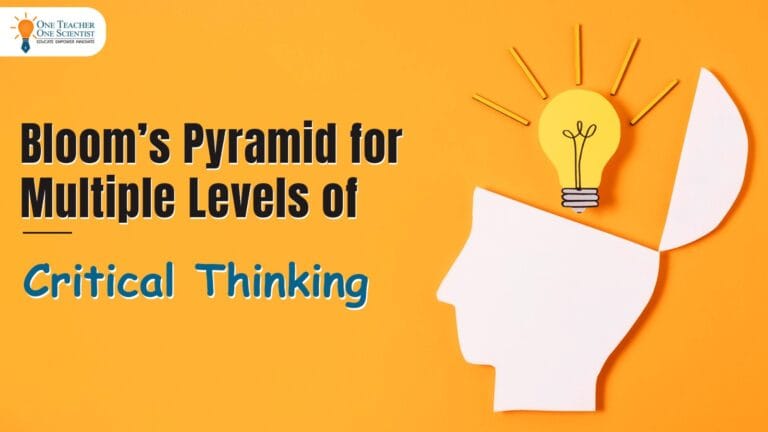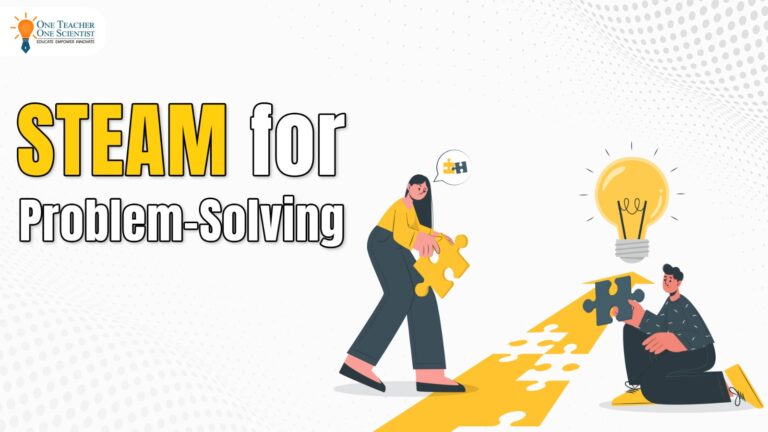We cannot overlook the power that Creative problem solving projects hold in building skills and muscle for thought and conceptualisation. Multiple and complex layers of learning can be seamlessly built within a typical problem solving project, which can stretch beyond just the curricular ones and can extend to developing and testing attitudes and belief of the learners about self and the peers.
To help children grow up with skills to keep pace with the demands of the 21st Century, we cannot overlook the power of Steam education, in schools and homes. To make children future ready, we can also not overlook the importance of building problem solving skills. To instil empathetic problem solving, we need to nurture the key competencies as well as character traits, to give children the elasticity to handle the rapidly changing world.
In a nutshell, creative problem solving requires a complex blend of skills, values and life skills in students which continuously get tested and honed throughout every procedural stage.
How to develop Creative Problem Skills?
To develop creative problem-solving skills, we need to focus on the project creation process first. The primary layers that teachers could focus earnestly, during the project creation process for students:
- What are the skills that one wants to develop in the learners?
- To what extent is prior knowledge getting utilised while executing the project?
- What are the key competencies getting built in the learner through the project?
- What kind of character traits will this project nurture in the learners?
- Does the project have enough flexibility to allow children to tinker and innovate?
- Does the project involve researching and sorting data and/ or information?
- To what extent will the learner be able to handle and manage uncertainty with ease after completing the project?
Once the teacher has kept this checklist in mind, the project creation stage becomes a powerful one.
Another interesting point to note is that it is at the implementation stage that the competencies and self beliefs of a teacher will get tested. A teacher, who is a comfortable risk taker would automatically encourage risk taking and allow children to stay involved in creative critical thinking skills. It is the fear of seeing your students fail at a task or not be able to do the task with speed and accuracy that makes the teacher feel disempowered and leads to the teacher revealing the answers or taking control of the project.
A teacher who loves control and is averse to uncertainty will not want situations going out of hand. He or she would automatically design projects that would minimise flexibility and explorations so that at no point the control slips off the hands of the teacher.
This can greatly hamper risk taking in students, and students will find it difficult to do deep explorations and avoid tinkering with objects and materials around.
Methods for creative problem solving
Project based and activity-based pedagogies are powerful methodologies to build creative problem solving in children. Creating or choosing the right projects and activities to build the skills becomes one of the main aspects. Let’s look at some of the key aspects that teachers should consciously keep in mind, while designing creative problem-solving projects:
- When projects are created keeping innovation in mind, children develop a muscle for failure and over time, they learn not to get overwhelmed by failures and mistakes. Projects that involve constructivism and design thinking, put students in situations where they experience failing at tasks many times till a creative and viable solution gets established.
- Since creative problem-solving puts creativity at its core, and involves multiple skill building, children learn a very important skill in this process. They realise that there is nothing right or wrong, but a viable solution in every situation. Hence, the life skill of negotiation gets subtly but strongly built into every CPS project. In today’s times, where everything is so dynamic, negotiation can be a very powerful muscle to build in our learners. The matrix of the modern world has far shifted from a clear cut, black and white one, and has embraced greyness. Over time, keeping CPS projects at the heart of our teaching learning environment can help children understand greyness and thrive in it.
- High entitlement issue is something that one often sees developing in today’s children. Many a times we find children unable to accept contradictory opinions and respect the diverse points of view of others. This issue is particularly on the rise due to high gratification level that children are getting, which is leading to a sense of entitlement in children. As families are shrinking with one or two children for every parent, entitlement can be a highly detrimental quality lurking around modern children, especially when they are expected to thrive in a rich collaborative ecosystem of the 21st Century. A smart teacher could design projects involving multiple feedback taken at multiple crucial points in the project execution This reflective, feedback and evidence-based methodology could be a powerful way of breaking the entitlement bubble that children of today live in.
- Projects built with a maker centred approach can build risk taking in children, as they are given freedom to experiment, explore and manipulate materials and weigh options while creating things. When children construct a variety of solutions, after exploring various options, they also learn to take responsibility of their choices, and develops a strong agency in them. They start looking at themselves as future change makers.
Conclusion
When children gather a variety of experiences, they develop a muscle to handle failure and adversity during the process. This helps them grow up feeling empowered with a sense of authority to effectively navigate through future challenges in life.
Creative Problem Solving projects can actually be a game changer when it comes to teaching children multiple skills that involve not just literacy skills, but also build in competencies and character building.
When children grow up with a strong sense of self-worth and confidence to create solutions and rise above failure in life, they also feel prepared to manage change and uncertainties in a more empowered way.




